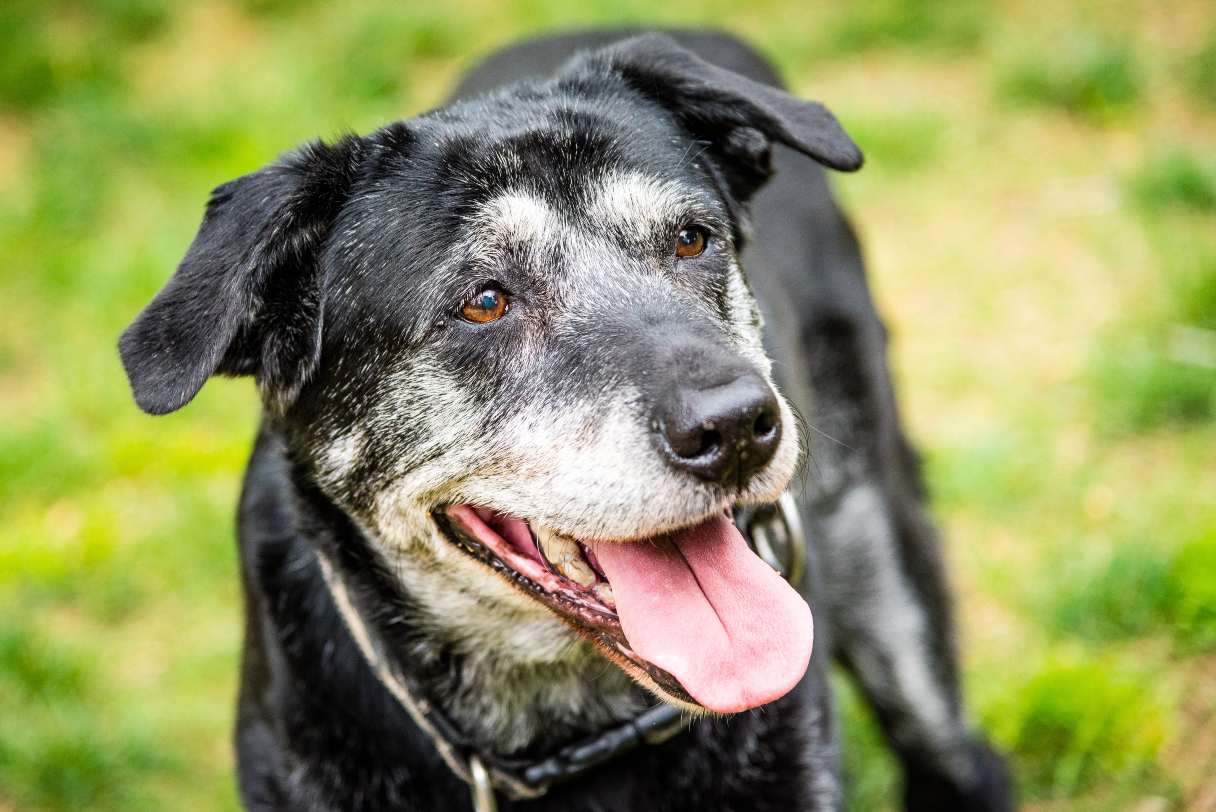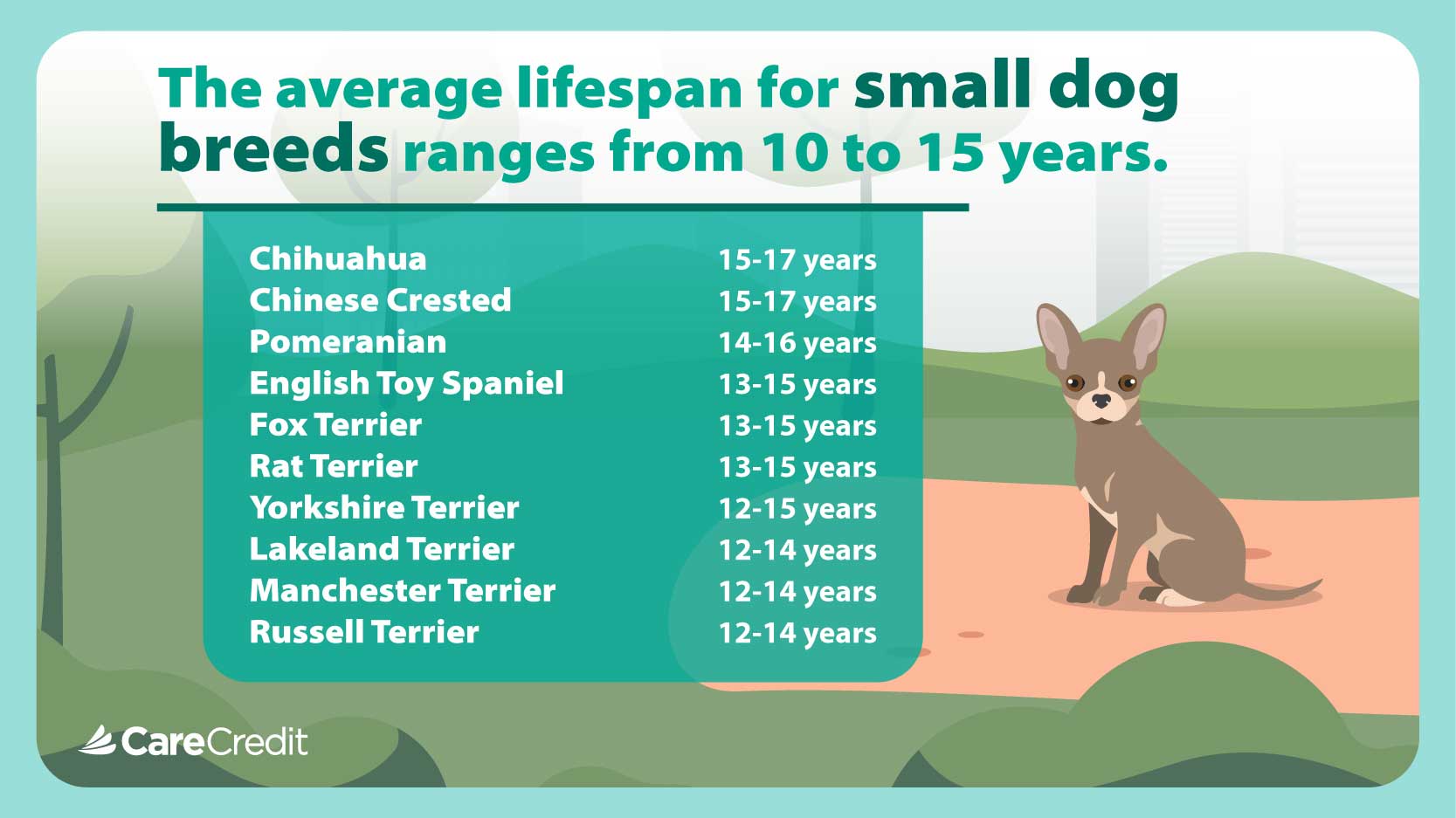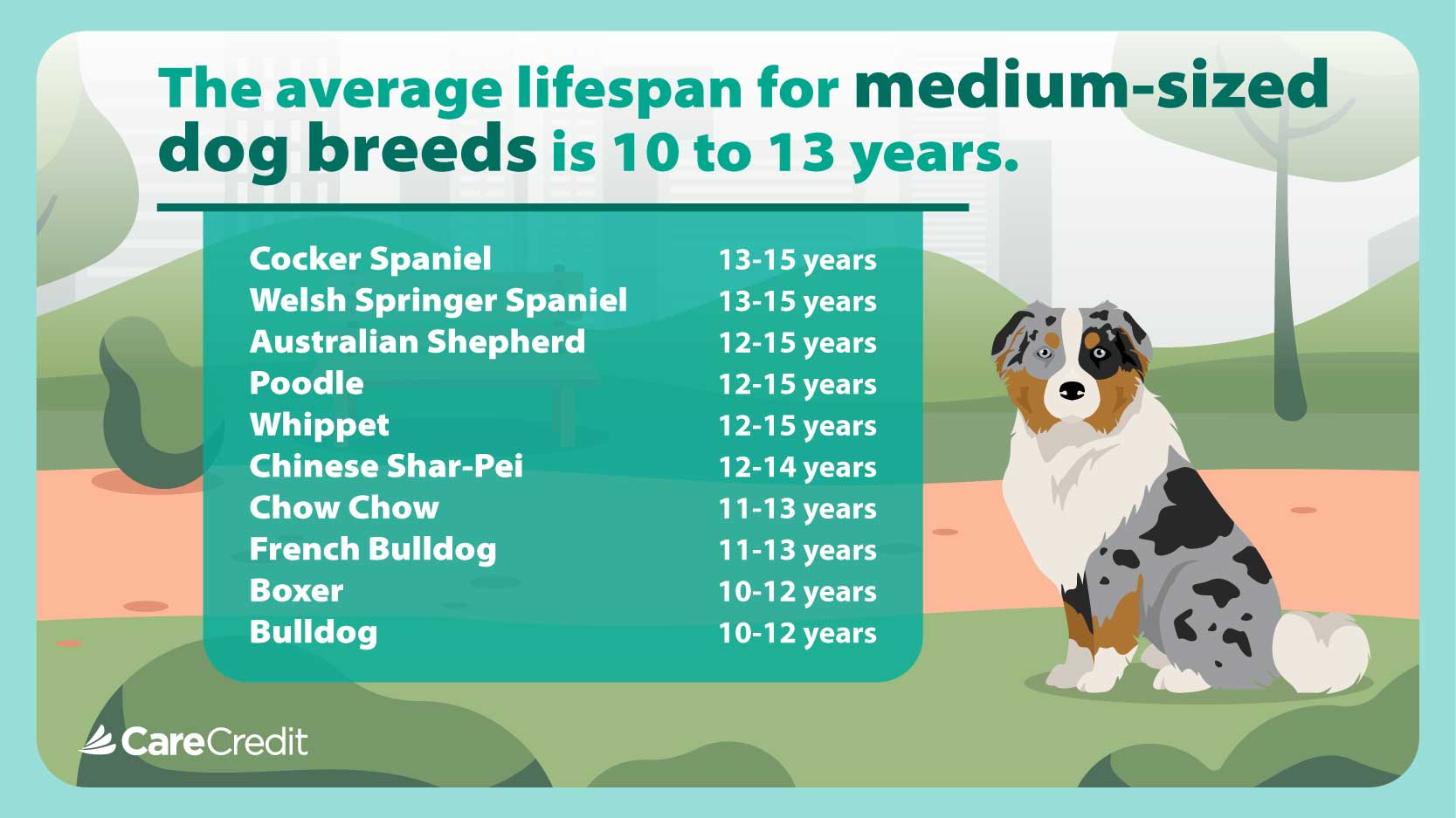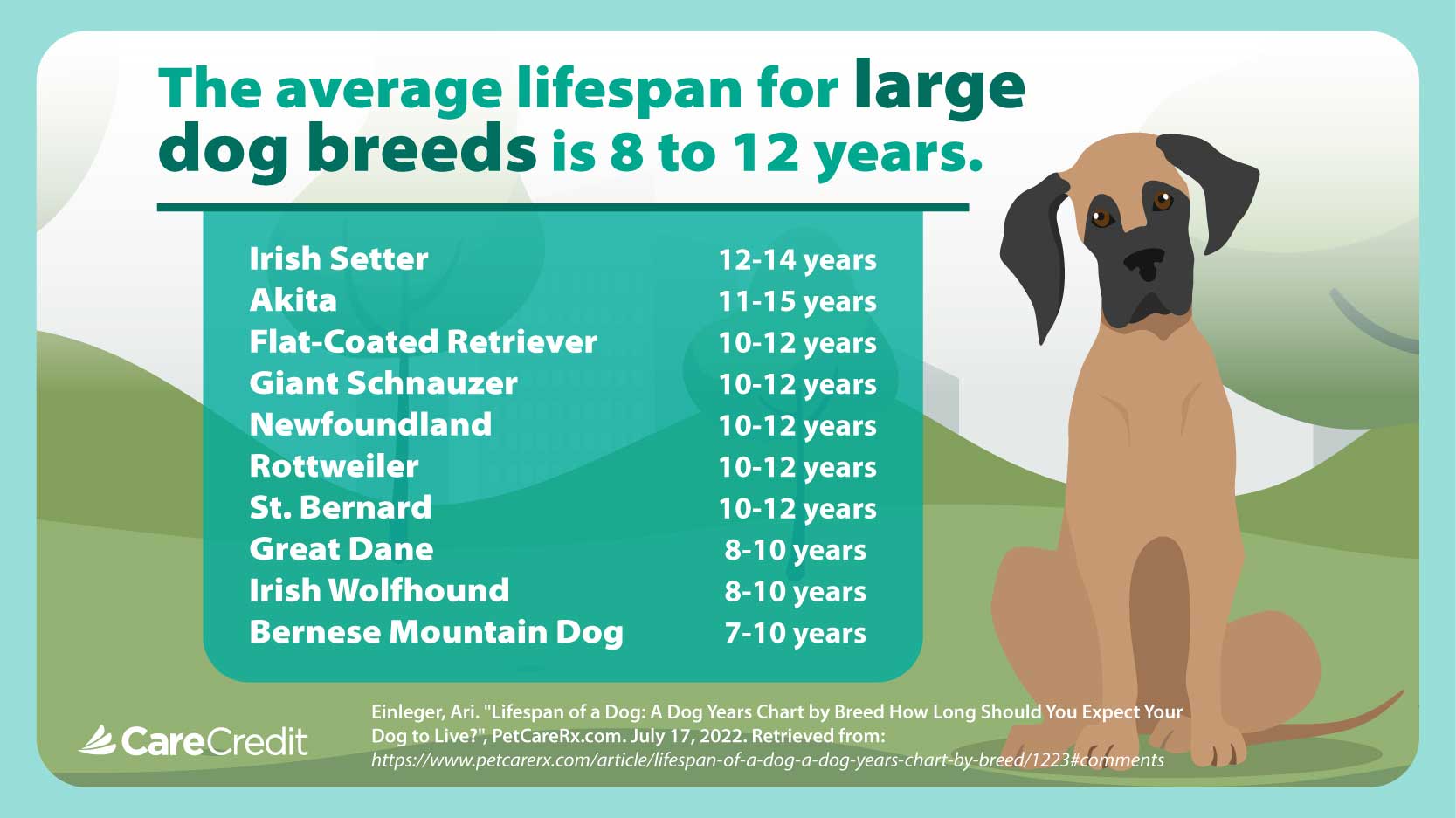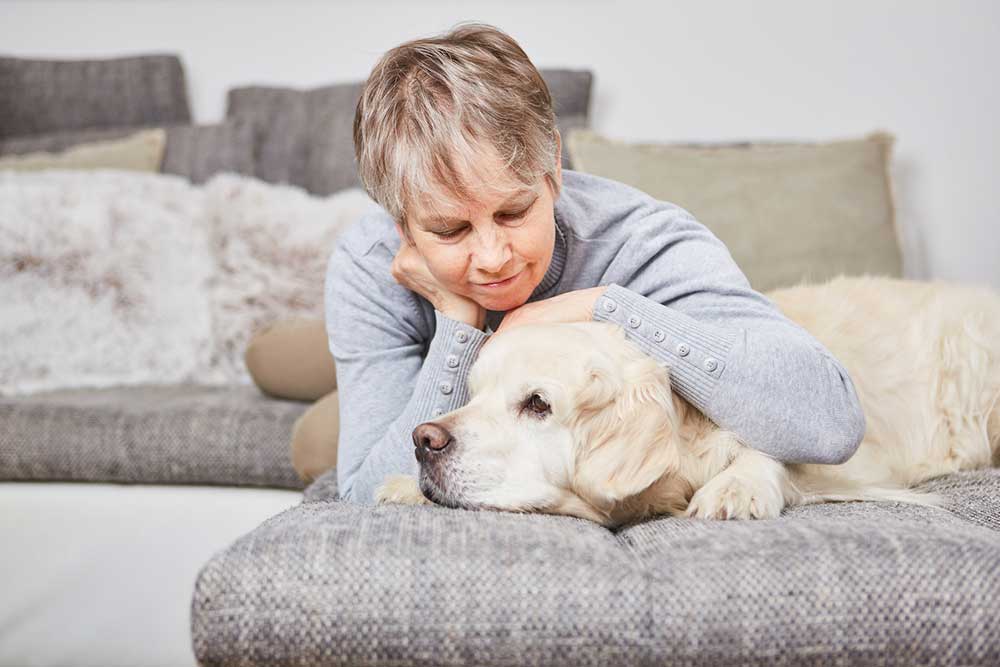As dogs age from a bouncy puppy to a slower senior, their behavior changes, too. (And that's not always a bad thing if your puppy ate everything in sight!) From the subtle to the more obvious, there are some distinct signs that your dog is getting older — if you know what to look for.
But let's start by understanding at what age a dog is considered a senior. Here's the short answer: It depends. Small dogs age slower than larger dogs, but it can also vary by breed — a Great Dane may outlive a bulldog, for example.1
Generally speaking, small dogs are considered seniors at 11 to 12 years, medium-sized dogs at 10 years, large dogs at 8 years and giant breeds at 7 years old.1
It's important to remember that getting old is not a disease in and of itself — many dogs can live healthy, happy lives well into their golden years. While all pets are different and your pup may not show all of these signs, here are some of the most common signs that your dog is reaching their senior years.
Physical Signs of Aging in Dogs
Some physical signs are more obvious than others. However, if you're ever concerned that your dog may be in pain, call your veterinarian. If your dog whines, cries, refuses or is reluctant to move in certain positions, it can be an indication that they are in pain.2
Below are some other signs of aging that you may notice:
- Slowing down or difficulty moving around. The number one sign of aging in dogs is they slow down. They can't walk as far, they might be more hesitant to go up the stairs or jump in and out of the car and it might take them longer to get up or sit down. Older dogs sometimes get arthritis, and your vet may be able to help alleviate the pain with a prescription or supplements. Swimming can also be good exercise for dogs with joint issues.3
- Weight change. As dogs slow down, they may gain weight. This often simply requires changing their diet. On the other hand, if your dog loses weight, especially rapidly, it could be caused by less muscle mass, but it could indicate a more serious problem.3
- Poor vision. Cloudy eyes and/or bumping into things can be a sign of cataracts, eye disease or vision loss. Some are easily treatable, while vision loss can just be a part of the aging process.3
- Lumps. Older dogs are more likely to get lipomas, which are harmless fatty deposits under the skin. That being said, any new lump or bump should be checked out by your vet, just to be sure.3
- Bad breath. Bad breath in a dog typically indicates some sort of gum disease or tooth decay. Your vet may recommend a cleaning or blood work to make sure there isn't an infection.3
- Incontinence or more frequent urination. If your older dog is suddenly having accidents around the house, it could be a urinary tract infection or kidney disease. It's not completely abnormal for older dogs to need to go more frequently though, and your vet may prescribe medication to help.3
- Ignoring commands. If you call your dog and they seemingly ignore you, it could mean that they simply cannot hear you.1 Try getting closer to them and calling again, or gently patting them to wake them up.
- Loss of hair. Your dog may get a dull coat or lose hair as they age.1
Mental or Behavioral Signs of Aging in Dogs
In addition to physical symptoms, your dog may exhibit some different behaviors as they age. Aside from sleeping more (which is normal), behavior changes can be caused by pain or possibly canine cognitive dysfunction syndrome (CCDS), a type of doggie dementia.3
Symptoms of CCDS include:3
- Pacing or restlessness, especially at night
- Newfound fear of familiar people or objects
- Increased barking or whining
- Increased anxiety
- Confusion or disorientation
- Repetitive or compulsive behaviors
How to Help Your Aging Dog Feel More Comfortable
If your dog is showing signs of pain or discomfort, there may be something your veterinarian can do to help your dog feel more comfortable. Your vet may also want to do some blood work or other testing just to make sure nothing else is going on.2
Beyond that, here are a few things you can do to make your home more senior dog-friendly:4
- Change their diet or exercise routine.
- Get an elevated dog bed.
- Get elevated food bowls.
- Put a rug down in areas where they might be more likely to slip or need more grip.
- Give them mental enrichment by letting them sniff more on walks or providing them with puzzle toys.
- Help them adapt to the weather by getting them a coat when it's cold or avoiding walking when it's too hot.
- Provide extra grooming if they are unable to do it themselves.
CareCredit Credit Card Financing for Dogs
Taking good care of your pet's well-being from nose to tail is essential. Make sure to stay up to date on their regular checkups at the vet to help keep your pet happy and healthy for a lifetime of love. You can use your CareCredit credit card for pet care throughout the year for routine veterinary services as well as emergencies and surgeries.* Apply today and use our Acceptance Locator to find a veterinarian near you that accepts CareCredit.
CareCredit is there for you and your pet every step of the way; continue your wellness journey by downloading the CareCredit Mobile App to manage your account, find a provider on the go and easily access the Well U hub for more great articles, podcasts and videos.
Author Bio
Abbie Mood is a freelance writer with more than 10 years of experience. She has worked with clients of all sizes to create compelling content and she has written for the American Kennel Club, Marriott Bonvoy, Women's Health Online, Headspace and more.



